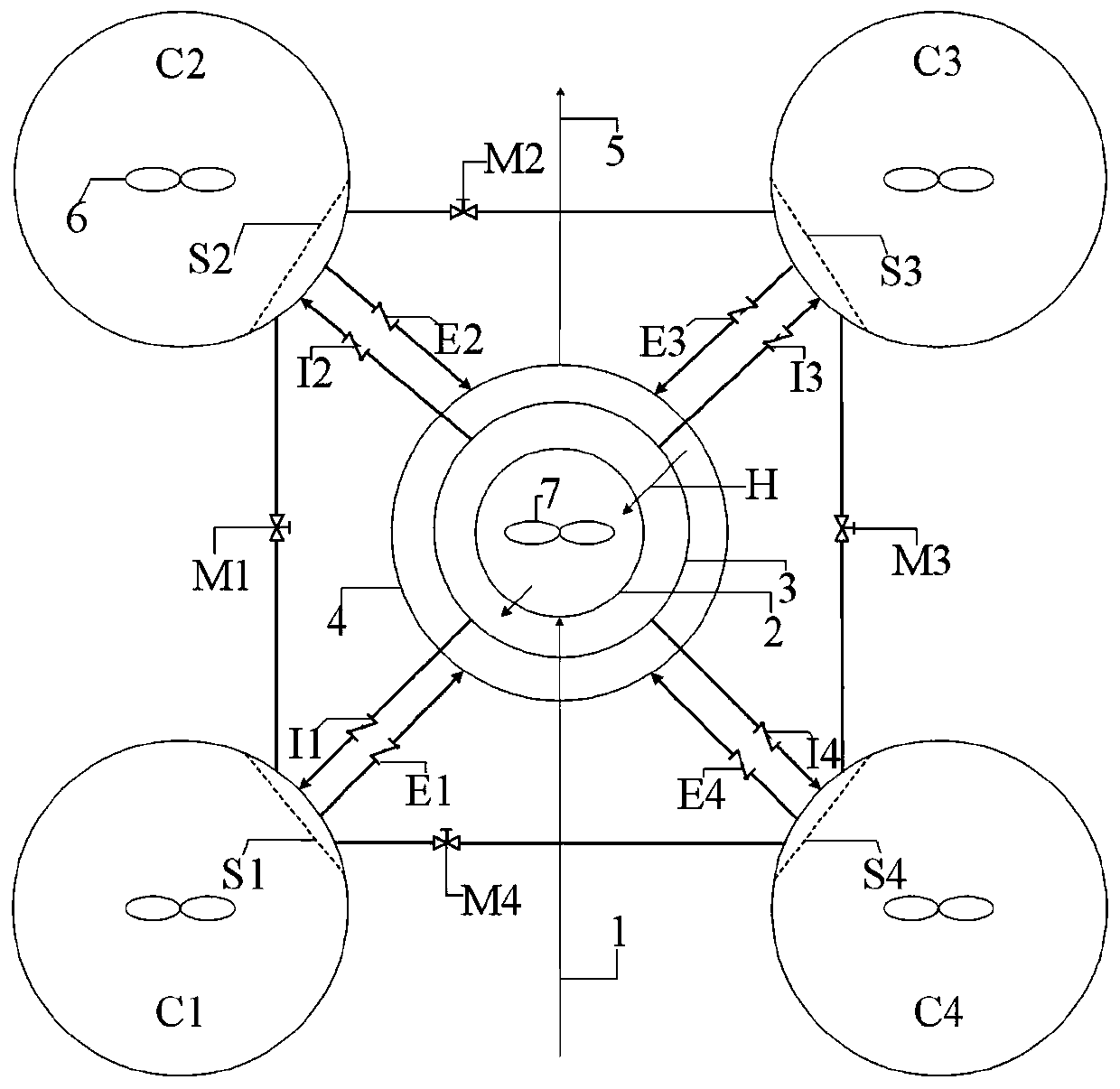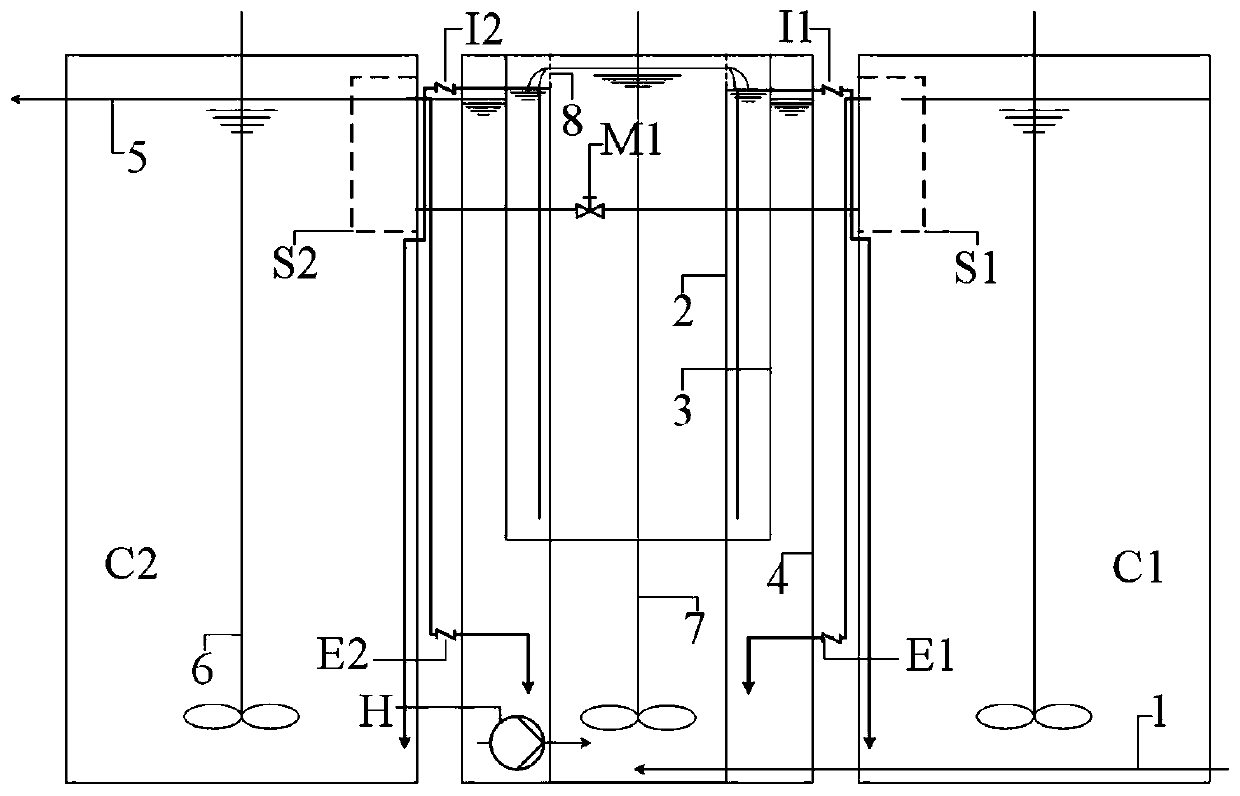A fast start-up method for an mbbr-based high-efficiency autotrophic denitrification system
An autotrophic denitrification and quick-start technology, applied in chemical instruments and methods, biological water/sewage treatment, sustainable biological treatment, etc., can solve problems such as small ratio, low total nitrogen removal load, and sinking of fillers. Achieve the effects of small inoculation ratio, high nitrogen removal efficiency and good tolerance
- Summary
- Abstract
- Description
- Claims
- Application Information
AI Technical Summary
Problems solved by technology
Method used
Image
Examples
Embodiment 1
[0114] The anaerobic digestion sludge dehydration liquid of a city sewage treatment plant is used as the system water intake, with a water volume of 2500m 3 / d, the average pH value is 7.9, the average water temperature is 32°C, the average COD concentration in the influent water is 1131mg / L, and the BOD 5 The average concentration is 952mg / L, the average ammonia nitrogen concentration is 550mg / L, the average nitrous nitrate concentration is 2.0mg / L, and the average alkalinity (calculated as CaCO 3 Total) 3795mg / L, the total effective volume of the reaction pool is 800m 3 , the effective volume of the denitrification tank is 400m 3 , the influent enters the four reaction pools C1-C4 through the denitrification pool.
[0115] In preparation for start-up, a suspension carrier is added to each reaction tank and denitrification tank, and the effective specific surface area of the carrier is 800m 2 / m 3 , with a porosity of 90%, in line with the industry standard of "High Den...
Embodiment 2
[0124] The anaerobic digestion effluent of landfill leachate from a landfill plant is used as influent water, with a water volume of 1300m 3 / d, pH value 7.8-8.3, average water temperature 33°C, average influent COD concentration 920mg / L, BOD 5 The average concentration is 801mg / L, the average ammonia nitrogen concentration is 550mg / L, and the total effective volume of the reaction pool is 400m 3 , divided into four reaction pools on average, and the effective volume of each reaction pool is 100m 3 , the effective volume of the denitrification pool is 200m 3 , Influent water enters four reaction pools C1-C4 after passing through the denitrification pool.
[0125] In preparation for start-up, the suspension carrier is added to both the reaction tank and the denitrification tank, and the effective specific surface area of the carrier is 800m 2 / m 3 , with a void ratio of 90%, in line with the industry standard of "High-density Polyethylene Suspension Carrier for Water Trea...
PUM
| Property | Measurement | Unit |
|---|---|---|
| clearance rate | aaaaa | aaaaa |
Abstract
Description
Claims
Application Information
 Login to View More
Login to View More - R&D
- Intellectual Property
- Life Sciences
- Materials
- Tech Scout
- Unparalleled Data Quality
- Higher Quality Content
- 60% Fewer Hallucinations
Browse by: Latest US Patents, China's latest patents, Technical Efficacy Thesaurus, Application Domain, Technology Topic, Popular Technical Reports.
© 2025 PatSnap. All rights reserved.Legal|Privacy policy|Modern Slavery Act Transparency Statement|Sitemap|About US| Contact US: help@patsnap.com


